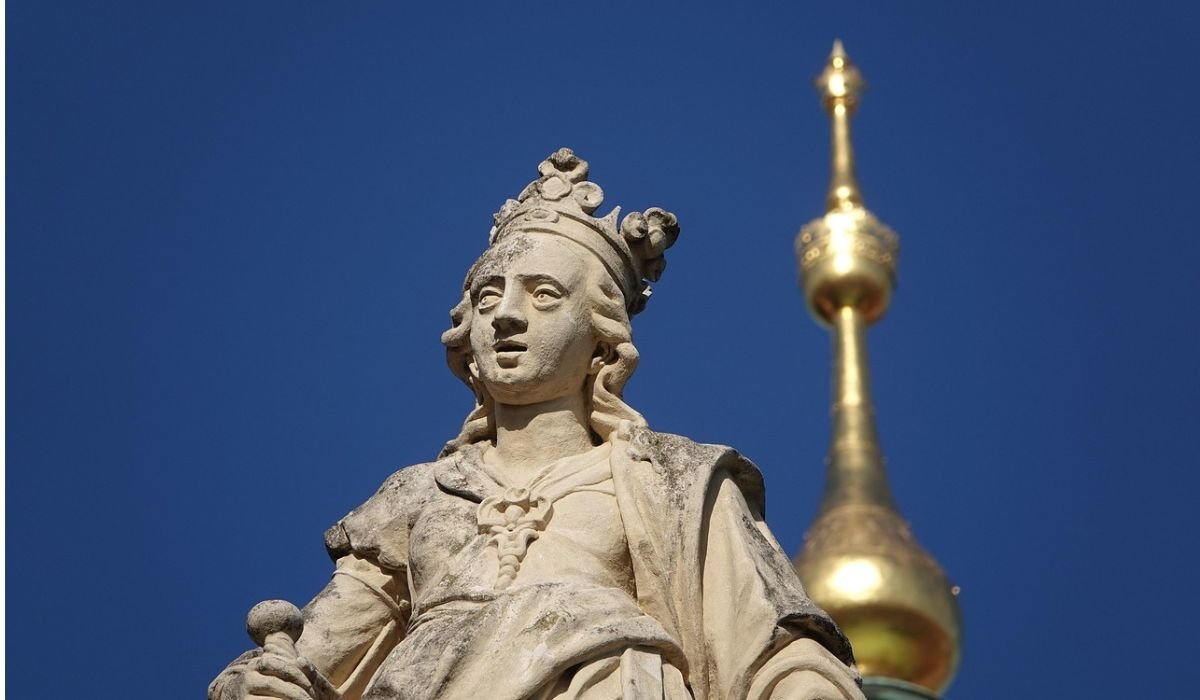A Rumor Too Juicy to Ignore
Whispers about Catherine the Great furniture have echoed through drawing rooms and comment sections for decades. The claim? Somewhere inside her palaces lurked a private cabinet of erotic furniture—tables with phallic legs, chairs carved with vulvae, walls hung with risqué scenes. It’s the kind of story that sticks, not because it’s well-sourced, but because it feels like a peek behind the velvet curtain. Here’s what we actually know—and what we don’t.
The Legend of the “Secret Room”
The German Soldiers’ Discovery: What the Story Claims
The most circulated version dates to World War II. As Nazi troops advanced near St. Petersburg, they were said to have found a hidden “sex room” in one of the imperial residences—sometimes placed at Gatchina, sometimes at Tsarskoye Selo—where they photographed explicit furniture before the room (and alleged artifacts) vanished in the chaos of war. Some modern articles repeat these claims, but none produce verifiable provenance for the images.
Alleged Items: Phallic Table Legs, Explicit Chairs, Pornographic Décor
Descriptions tend to repeat the same inventory: a desk and chairs with explicit carvings, a table supported by erect penises, and graphic wall art. It’s lurid—and suspiciously consistent—across retellings that lean on hearsay rather than museum records.
Fact or Fiction? The Historian’s Take
No Verified Photos, No Authenticated Artifacts
This is the crucial point: there are no authenticated photographs or cataloged objects linking these erotic pieces to Catherine II. Reputable outlets examining the story stress the absence of proof; some note that pictures occasionally shown online lack provenance and cannot be traced to museum files or wartime archives.
Could the Pieces Have Been Destroyed in the War?
It’s possible that if such objects existed, they were lost during the catastrophic wartime destruction of imperial residences: the Catherine Palace alone saw dozens of ceremonial halls obliterated, with large-scale postwar reconstructions continuing to this day. That destruction is well-documented—and it explains how legends can flourish in the gaps—but it does not prove the furniture was ever real.
Rumors as Political Weaponry
Sex, Power, and Smearing Powerful Women
Catherine’s private life was a magnet for gossip long before the Wehrmacht crossed her thresholds. Like Cleopatra and other forceful female rulers, she was targeted with sexually charged slander designed to shrink her achievements. Modern historians bluntly debunk the most infamous tale—the horse myth—as misogynist nonsense, yet note how such myths endure because they’re sensational and easy to repeat. The “erotic furniture” legend fits the same pattern.
From the Horse Myth to “Erotic Furniture”
During and after her reign, pamphlets, cartoons, and enemy propaganda gleefully reduced Catherine to sex. The furniture rumor likely piggybacked on that reputation, offering a physical “set” for scandal even if no reliable evidence survives.
So… What Furniture Did Catherine Actually Own?
Rococo to Neoclassical: Court Style in St. Petersburg
Catherine adored French taste and European craftsmanship. The Russian court in her era shifted from playful Rococo to crisp Neoclassicism—think gilded bronzes, fine marquetry, and symmetry. You can still see that aesthetic in the restored imperial interiors and in holdings associated with her collection.
Real Commissions and Mechanical Marvels (Roentgen & Co.)
If you want scandal of the non-salacious sort, look at the engineering: Germany’s David Roentgen dazzled Europe with mechanical desks and cabinets full of hidden compartments and musical automata; his work reached St. Petersburg and impressed the empress’s circle. The Met has showcased the Roentgen workshop as the pinnacle of princely furniture innovation—decadent, ingenious, and very much the kind of thing Catherine’s court embraced.
The Broader Context of an Empress
Enlightened Despot, Prolific Collector, Many Lovers
Catherine II ran an empire, modernized its institutions, and cultivated an image of cultivated power. She built (and branded) culture as policy: acquiring entire collections, funding palaces, and turning the Hermitage into a symbol of imperial sophistication. Her romantic life—real and rumored—was public enough to fuel centuries of gossip, but it shouldn’t eclipse her statecraft.
Catherine, Voltaire, and the Birth of the Hermitage
Her correspondence with Enlightenment figures was more than flirtation with ideas; she literally bought Voltaire’s library and seeded it in imperial collections. If you want a concrete “Catherine artifact,” that’s where to start. The Hermitage and the National Library of Russia both document this acquisition, which says far more about the empress than any mythic chaise longue.
FAQs
What kind of furniture did Catherine the Great have?
Luxurious court pieces spanning late Rococo to Neoclassical, with fine marquetry, gilt-bronze mounts, and—often—ingenious mechanisms by top European makers such as Roentgen.
Was the furniture in Catherine the Great’s “sex room” real?
There’s no verified evidence. The oft-cited WWII “photos” lack provenance, and no authenticated artifacts have surfaced in museum records.
Where are Catherine the Great’s rumored erotic artifacts now?
Nowhere we can verify. Some speculate they were destroyed during the war, which ravaged the palaces around St. Petersburg—but speculation isn’t proof.
How did the rumors about Catherine the Great’s furniture begin?
They likely fuse wartime legends with a much older tradition of sexualized slander against Catherine, amplified by 18th–20th century satire and gossip.
What was Catherine the Great’s reputation like in her time?
Mixed—and fiercely contested. She was admired as an enlightened ruler and collector, yet vilified by enemies who weaponized stories about her sex life.
If I want to see Catherine the Great furniture today, where should I look?
Start with the State Hermitage Museum in St. Petersburg for the scope of her collecting program and the court aesthetic it shaped.
Conclusion
The tale of Catherine the Great furniture persists because it offers a thrilling shortcut: a room that explains a ruler. But history is rarely that neat. The evidence for a secret erotic cabinet remains unproven, while the evidence of Catherine’s cultural project—the Hermitage, her letters, her commissions—stands in stone, paint, paper, and wood. Whether or not a risqué table ever graced her private apartments, the real story is bigger: how an empress used art, architecture, and yes, furniture, to project imperial power and rewrite Russia’s place in Europe. That, not a salacious rumor, is the piece that still furnishes her legacy.
YOU MAY ALSO LIKE: Effective Tips for a Fast and Stress-Free Home Sale

